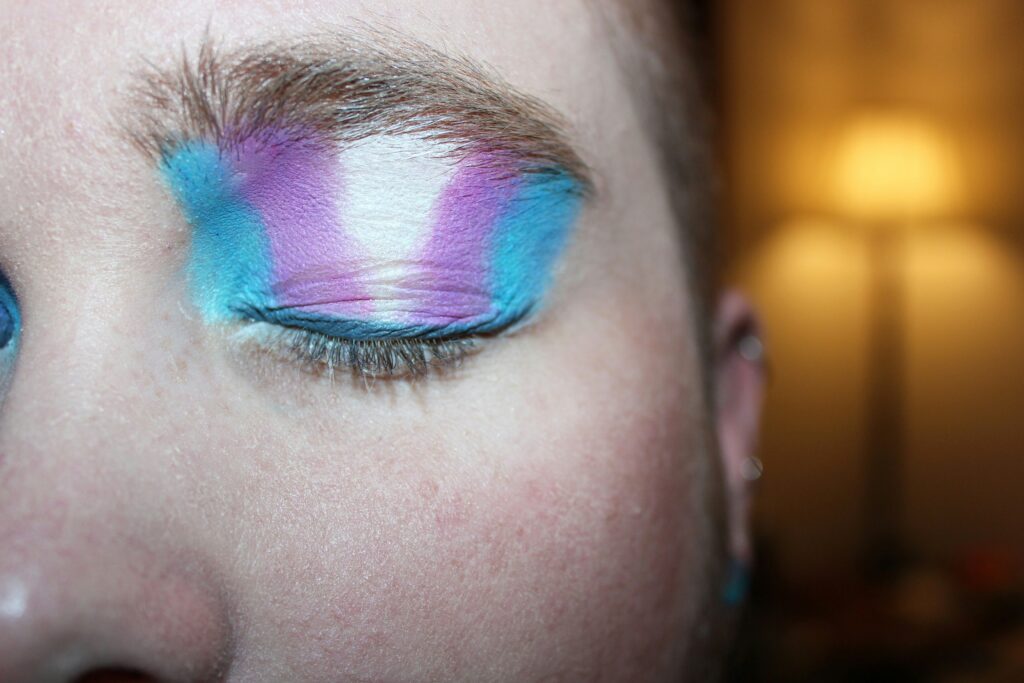
For many individuals in the LGBTQIA+ community, the journey of transitioning can be a tumultuous one. A journey filled with a range of emotions including anxiety and depression. The process of coming to terms with one's gender identity, undergoing hormone replacement therapy (HRT), and potentially having surgeries can be overwhelming. However, there is a therapeutic approach that may offer relief and help individuals feel more connected with their mind and body. It is called Eye Movement Desensitization and Reprocessing (EMDR) therapy.
Understanding the Emotional Terrain of Transitioning
Transitioning, for many within the LGBTQIA+ community, represents not only a journey of physical metamorphosis but also of profound emotional exploration and self-discovery. This path, while ultimately affirming, is often fraught with complex feelings that can challenge even the strongest among us. As individuals embark on this deeply personal quest to align their outer selves with their inner truth, they may confront a myriad of societal pressures and internal conflicts that can exacerbate feelings of anxiety and depression.
The emotional landscape of transitioning is intricate and varied. It can encompass the excitement and hope of becoming more authentically oneself. It also comes with the fear and uncertainty that change inevitably brings. This anticipation of achieving congruence in one’s gender identity can be shadowed by the dread of potential isolation, misunderstanding, and discrimination. These external pressures compound the internal struggle, making it difficult for some to navigate the process of self-acceptance and self-love.
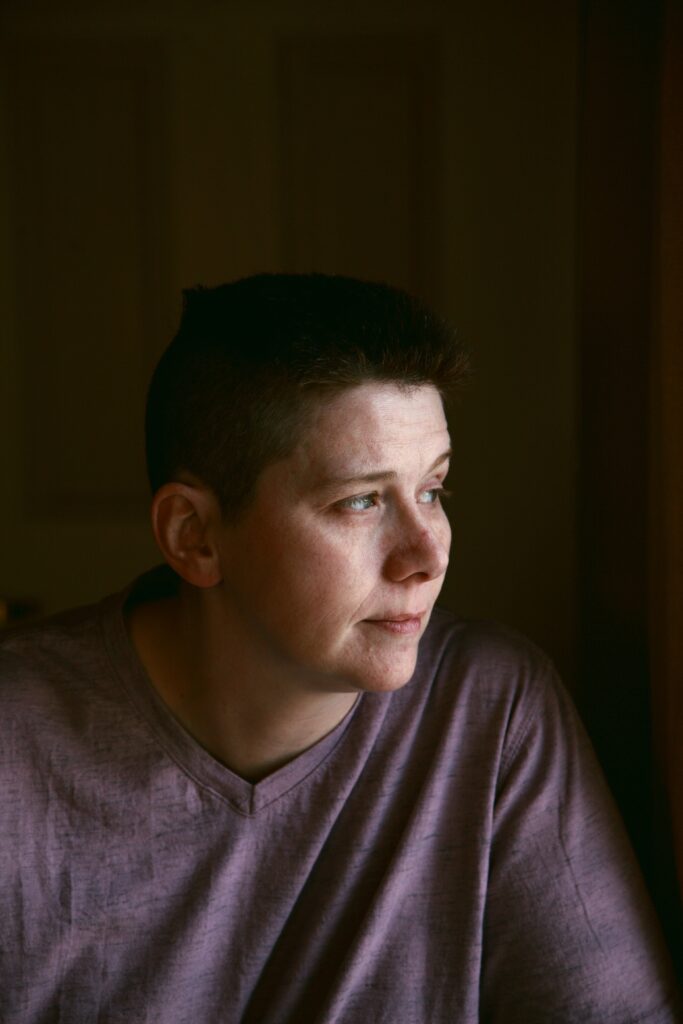
Complicating this journey further are the obstacles to finding affirming support and understanding. Misconceptions and stigma about what it means to transition can leave individuals feeling isolated and invalidated. This can intensify feelings of anxiety and depression. The daunting task of explaining one’s identity to others, fear of rejection, and the constant battle against societal norms and expectations can be overwhelming, leading to a profound sense of loneliness and despair.
As such, the emotional terrain of transitioning is marked by highs and lows. This can range from moments of exhilarating clarity as well as painful doubt. The process requires incredible resilience and courage, as individuals navigate through this complex emotional landscape in pursuit of their true selves. While the journey is inherently challenging, understanding and acknowledging these emotional experiences are crucial steps toward healing and growth.
An Introduction to EMDR Therapy
Eye Movement Desensitization and Reprocessing (EMDR) therapy emerges as a compelling psychotherapeutic approach. It is particularly renowned for its efficacy in addressing trauma-related conditions. EMDR facilitates the processing of distressing memories and emotional pain by activating both hemispheres of the brain through bilateral stimulation. This bilateral stimulation can be guided eye movements or tactile tapping. This innovative method aims to assist individuals in reorganizing and reinterpreting memories and emotions that are at the root of their psychological distress.
Developed in the late 1980s, EMDR has rapidly evolved and garnered empirical support as a treatment for various manifestations of psychological distress. Its unique methodology involves eight distinct phases, guiding clients from history-taking to the processing of traumatic events, and culminating in the consolidation of adaptive coping mechanisms. During EMDR sessions, therapists work closely with clients to identify specific distressing memories. They also help to identify negative beliefs about themselves that are associated with these memories. Through the structured phases of EMDR, clients are encouraged to focus on these memories while simultaneously engaging in bilateral stimulation. This dual focus facilitates the brain's natural healing process. This allows for the emotional charge of the memory to be diminished and for a more adaptive, empowering narrative to emerge.
Importantly, EMDR therapy goes beyond mere symptom relief, striving to foster a holistic sense of healing. Clients often report a decrease in distress related to specific memories and an overall improvement in their well-being. This gives room for an increased capacity to engage in their lives more fully. By directly targeting the underlying emotional impact of traumatic and distressing experiences, EMDR holds promise as a transformative therapeutic modality, especially for those contending with the profound emotional complexities associated with transitioning. Through its structured yet flexible approach, EMDR offers a pathway to healing that is both scientifically grounded and deeply attuned to the individual's psychological landscape.
EMDR in Action: Healing from Gender Dysphoria
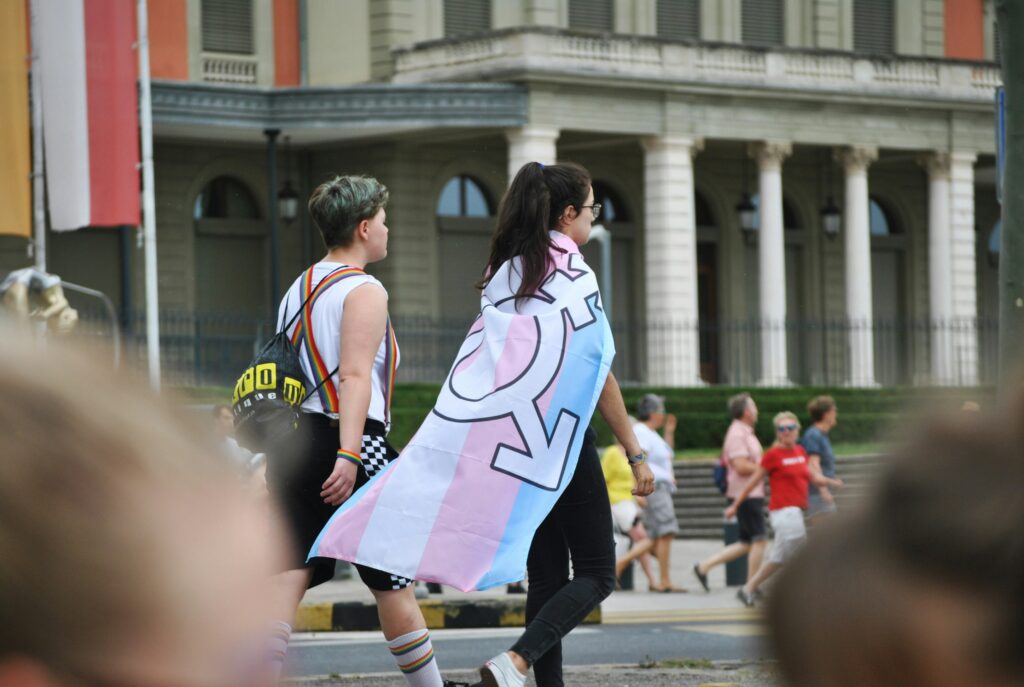
EMDR therapy emerges as a vital resource for those grappling with gender dysphoria. Gender dysphoria is a condition characterized by profound discomfort due to a discrepancy between one’s experienced gender and the gender assigned at birth. This discomfort often manifests as severe anxiety, depression, and a disconnection from one’s body. In navigating these turbulent emotions, EMDR offers a promising avenue for healing and self-discovery.
Through its structured approach, EMDR targets the distressing memories and negative self-perceptions that underpin gender dysphoria. Individuals may harbor deep-seated beliefs of not belonging, being misunderstood, or feeling inherently flawed due to their gender identity struggles. EMDR engages the brain’s natural healing processes, allowing individuals to reprocess these painful experiences and beliefs. By focusing on specific memories or thoughts while receiving bilateral stimulation, clients can start to dissociate the negativity, shame, or fear attached to these memories. It can pave the way for more affirmative and empowering narratives about their gender identity.
The therapy’s unique ability to delve into the layers of emotional pain and cognitive dissonance that accompany gender dysphoria makes it an invaluable tool. It assists in alleviating the acute distress associated with living in a body that feels incongruent with one’s gender identity. As these individuals process their experiences through EMDR, they often find that the emotional charge of their distressing memories diminishes. This reduction in emotional intensity can lead to a significant decrease in anxiety and depression levels. It can ultimately contribute to a more harmonious internal experience.
As part of a comprehensive treatment plan, EMDR facilitates a journey towards self-acceptance and body congruence. It helps individuals in the LGBTQIA+ community to not only reconcile their past experiences with their gender identity but also fosters a stronger, more positive connection with their bodies and selves. Through EMDR, the path to healing from gender dysphoria becomes more accessible. It, empowers individuals to embrace their true identity with confidence and peace.
The Role of EMDR in Overcoming Anxiety and Depression
EMDR therapy stands out as a potent intervention for mitigating the profound impacts of anxiety and depression. This is particularly poignant for those undergoing the transition process. This therapeutic modality dives deep into the psyche, addressing the root causes of these mental health challenges. Through the distinctive mechanism of bilateral stimulation, EMDR aids individuals in accessing and processing the distressing memories and entrenched negative beliefs that fuel their emotional turmoil.
In the context of transitioning, anxiety and depression often stems from accumulated life experiences, societal rejection, or internalized stigma. Each of the forementioned can create a pervasive sense of being trapped or misunderstood. EMDR facilitates a re-examination and restructuring of these painful narratives, allowing for a transformative healing journey. By engaging the brain's innate capacity for resilience and recovery, it offers a path through which clients can gradually diminish the intensity of their emotional pain. It makes room for more adaptive, positive perspectives on their identities and experiences.
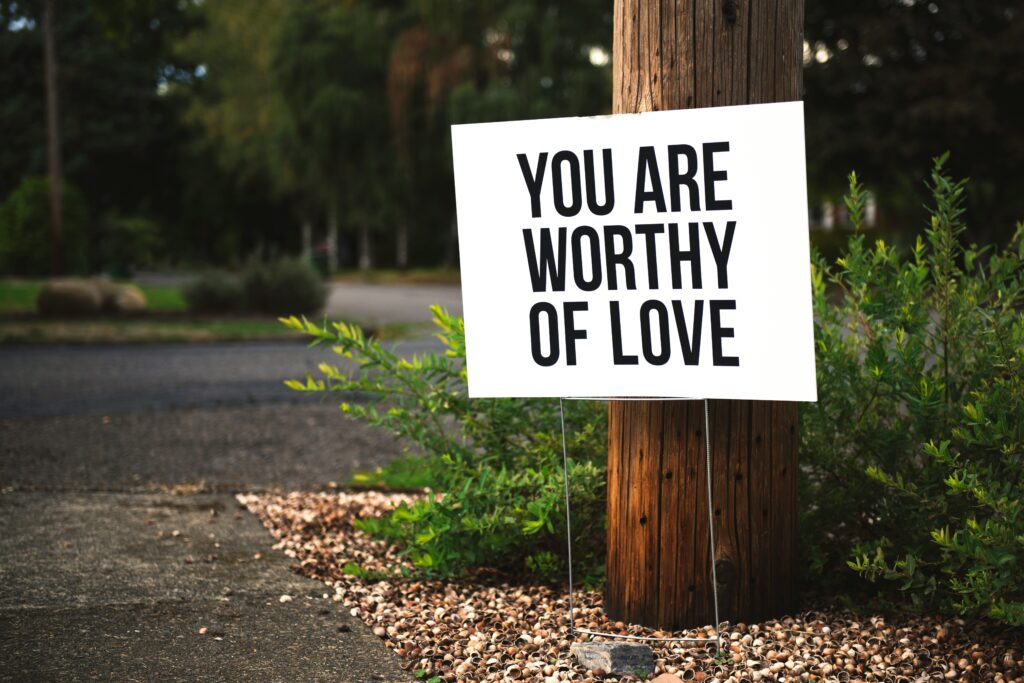
The therapy’s focused approach enables individuals to dismantle the complex layers of anxiety and depression. This helps to foster a sense of empowerment and renewed self-compassion. As these individuals progress through the phases of EMDR, they often report a significant alleviation of their symptoms. People begin to experience an enhanced ability to cope with stress and embrace their true selves with greater confidence.
EMDR's role in combating anxiety and depression is thus pivotal. It offers not just a means to cope but a route to thriving. Its application within the transitioning journey underscores a commitment to holistic well-being. Doing this, acknowledges the intrinsic link between resolving past traumas. It truly fosters a future where one's gender identity can be lived fully and authentically.
Finding Support and Embracing EMDR Therapy
In the pursuit of healing and self-discovery during transitioning, the role of supportive therapy cannot be overstated. It is critical to connect with therapists who possess a deep understanding of gender diversity. It is just as important that they exhibit a genuine commitment to creating a respectful and welcoming therapeutic environment. EMDR therapy has the profound potential to address the psychological distress associated with transitioning. This requires navigating with a therapist is skilled in its application and sensitive to the nuances of the LGBTQIA+ experience.
Choosing the right therapist involves seeking out professionals who are conversant with EMDR and actively affirm and celebrate LGBTQIA+ identities. Such therapists are instrumental in fostering a space where individuals can explore their feelings and experiences without fear of judgment or misunderstanding. They play a crucial role in facilitating the therapeutic process, guiding individuals through the nuanced phases of EMDR with empathy and understanding.
Embarking on EMDR therapy with a supportive therapist opens up avenues for profound emotional healing and growth. This therapy is done in a manner that is both empowering and transformative. It enables individuals to work through the layers of anxiety, depression, and trauma that transitioning can unearth. The journey with EMDR therapy is one of reclamation, allowing individuals to rewrite their narratives with strength and authenticity.
The decision to seek out EMDR therapy, paired with the support of a knowledgeable and affirming therapist, marks a significant step towards achieving psychological well-being and a deeper alignment with one’s true self. It underscores the importance of supportive relationships in the healing journey, reminding individuals that they do not have to navigate this path alone.
When it comes to self care, finding a welcoming and inclusive environment is essential for relaxation and rejuvenation. For members of the LGBTQ+ community, this is especially important as they deserve to feel safe and accepted while taking a break from the stresses of everyday life. Fortunately, there are plenty of destinations on the East Coast that cater to LGBTQ+ travelers, offering a welcoming and inclusive environment for self care escapes. Here are the top 5 LGBTQ+ welcoming spots on the East Coast that are perfect for a rejuvenating getaway.
Provincetown, Massachusetts - A Haven of Arts and Acceptance

Nestled at Cape Cod's northern tip, Provincetown beams as a beacon of creativity, welcoming a vibrant community of artists, writers, and LGBTQ+ individuals. This picturesque town is a tapestry of cultural richness. It is where every street and corner tells a story of acceptance and diversity. Its unique charm is amplified by an array of art galleries, eclectic boutiques, and cozy cafés, each offering an experience steeped in inclusivity. Provincetown thrives as a cultural hub, inviting visitors to immerse themselves in its artistic ambiance and liberal spirit.
The town is famed for its dynamic LGBTQ+ events that draw visitors from across the globe. The Provincetown International Film Festival is a highlight, showcasing diverse stories through the lens of talented filmmakers. Meanwhile, the Provincetown Carnival erupts in a kaleidoscope of colors, celebrating diversity with parades, costumes, and performances that embody the town's inclusive ethos. These events, among others, weave a sense of community and celebration, making Provincetown an unmatched destination for those seeking solace and self-expression.
The embrace of the LGBTQ+ community here is palpable, with venues and spaces designed to foster connections, creativity, and relaxation. Whether one is seeking inspiration through art, the joy of a shared celebration, or a quiet moment of reflection by the sea, Provincetown extends an open invitation. Its commitment to creating a safe and accepting environment encourages visitors to explore their identities. engage with like-minded individuals, and indulge in the town's cultural offerings at their own pace.
In Provincetown, every day is an opportunity to experience the vibrancy of life without reservation. Its inclusive atmosphere not only nurtures self-care but also champions the importance of community, making it a sanctuary for anyone looking to replenish their spirit amidst a backdrop of artistic and cultural abundance.
New York City, New York - The Melting Pot of Diversity
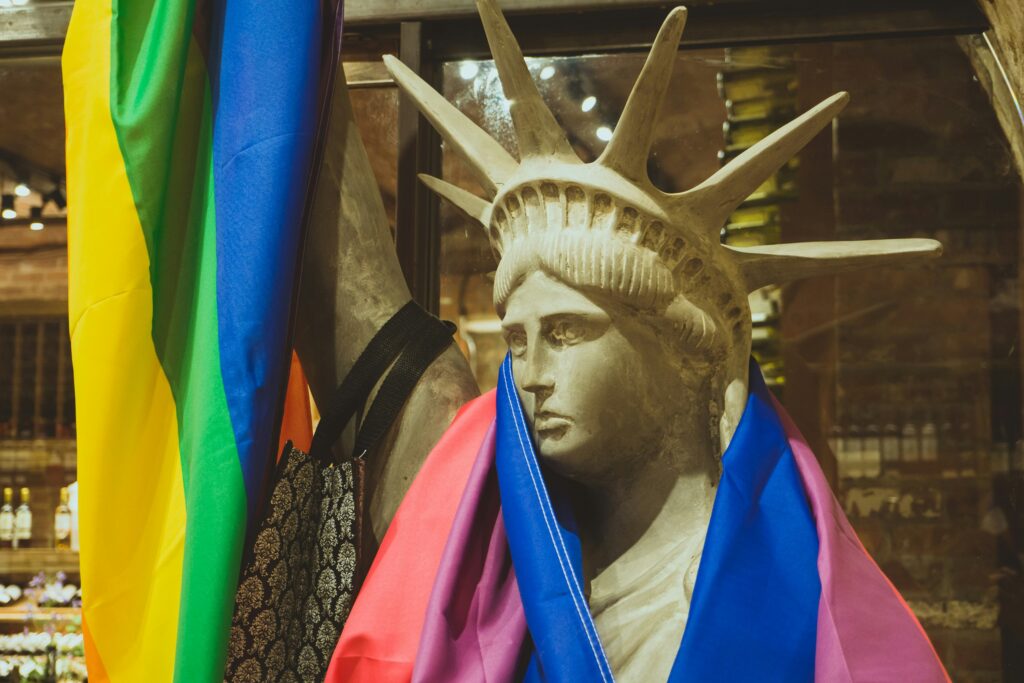
New York City stands as a dynamic hub of diversity, offering an open and inviting atmosphere for LGBTQ+ individuals in search of self care and liberation. The city's vibrant energy and boundless inclusivity make it an ideal destination for those wishing to immerse themselves in an environment where every identity is celebrated. With an array of neighborhoods each showcasing their unique flavor, the city is a mosaic of cultures and expressions.
Hell's Kitchen, another emblematic locale, pulsates with an eclectic nightlife and diverse culinary scene that cater to all tastes and persuasions. Its theaters and comedy clubs offer spaces where laughter and camaraderie flourish. It invites visitors to partake in the joy of shared experiences.
Moreover, New York City's commitment to LGBTQ+ rights and visibility is evident in its annual Pride celebrations. The city transforms into a dazzling spectacle of love, resilience, and unity. The streets come alive with parades, festivals, and art installations that showcase the strength and beauty of the community.
Amidst the skyscrapers and the relentless pace of the city, there exist countless opportunities for connection, reflection, and renewal. From tranquil parks to avant-garde galleries, New York City provides a backdrop against which individuals can explore aspects of identity, culture, and self-care, all within a framework of inclusivity and respect. Here, the spirit of diversity fuels not just a sense of belonging. It is also a profound celebration of life's multifaceted expressions.
Rehoboth Beach, Delaware - A Quiet Escape
Rehoboth Beach stands out as a tranquil haven, offering a gentle reprieve from the hustle and bustle often found in larger cities. This coastal gem in Delaware is renowned for its inviting atmosphere, catering to those in the LGBTQ+ community seeking peace and relaxation. The allure of Rehoboth Beach lies in its simplicity and the quiet acceptance found within its community. The broad, sandy beaches provide a perfect setting for meditation, sunbathing, or reading a favorite book. It allows visitors to reconnect with themselves in a serene environment.
The town's boardwalk, with its old-world charm, is lined with family-owned shops, inviting eateries, and galleries that showcase local art, reflecting the town's inclusive spirit and support for LGBTQ+ individuals. Beyond the beach, Rehoboth Beach is home to a variety of accommodations and venues that proudly serve the community. It offers everything from cozy bed and breakfasts to vibrant nightlife options. These establishments not only provide a safe space for travelers but also foster a sense of belonging and connection among guests.
For those looking to indulge in self-care, the town's wellness centers and spas offer a range of services designed to pamper and rejuvenate. Whether it's a relaxing massage, a yoga class overlooking the ocean, or a leisurely bike ride through scenic trails, Rehoboth Beach provides ample opportunities for self-reflection and renewal. This destination embodies the essence of a quiet escape, where one can easily find solace and joy in the natural beauty and warm community spirit.
Asheville, North Carolina - The Gem of the Blue Ridge

Asheville, North Carolina, offers an enchanting retreat nestled amidst the Blue Ridge Mountains' verdant landscapes. This city, known for its welcoming spirit and eclectic charm, presents an ideal self care sanctuary for LGBTQ+ travelers. Asheville's vibrant arts scene is a testament to the city's culture of inclusivity, with galleries, live music venues, and theaters showcasing the creative talents of local artists and performers. The city's commitment to celebrating diversity and fostering an open community can be felt in every corner. It makes it a place where visitors can freely express themselves and find solace.
Food enthusiasts will revel in Asheville's burgeoning culinary scene. This features an array of farm-to-table restaurants and food festivals that cater to every palate. The city's emphasis on sustainability and local produce adds a meaningful dimension to the dining experience. It invites guests to indulge in flavors that are both delightful and ethically sourced. Moreover, Asheville's numerous craft breweries offer a cozy ambiance for socializing and sampling innovative brews in settings that are both inviting and inclusive.
For those seeking adventure and rejuvenation in nature, the surrounding Blue Ridge Mountains provide a spectacular backdrop for outdoor activities. Hiking trails wind through scenic vistas, offering breathtaking views and moments of reflection. The area's natural hot springs are a must-visit, offering a unique opportunity to relax and rejuvenate in a serene, natural setting.
Asheville's friendly community and array of wellness-oriented activities make it a haven for LGBTQ+ travelers. Especially people looking for a self care escape. From engaging with the arts to enjoying the natural beauty and culinary delights, Asheville provides a diverse and welcoming environment for all who visit. This ensures a memorable experience that nurtures both body and soul.
Key West, Florida - Tropical Inclusivity

Key West is a beacon of warmth and acceptance, casting a wide embrace over anyone seeking a tropical retreat that champions inclusivity. This island paradise is distinguished by its laid-back demeanor and a vibrant community spirit. It makes for an idyllic spot for LGBTQ+ individuals looking for a mix of adventure, relaxation, and self-care. The eclectic mix of cultures and histories has woven a rich tapestry that celebrates diversity at every corner. This includes the bustling Duval Street to the quiet, palm-lined neighborhoods.
The town's legendary openness is reflected in its variety of events and festivals specifically catering to the LGBTQ+ community. This includes the famous Key West Pride and the whimsical Fantasy Fest. It fills the streets with a riot of colors, music, and costumes, emphasizing unity and freedom of expression. Key West's commitment to creating a welcoming atmosphere is evident in its array of accommodations, eateries, and bars that not only welcome but celebrate LGBTQ+ guests.
For those in pursuit of tranquility and natural beauty, Key West does not disappoint. The island is surrounded by the clear blue waters of the Gulf of Mexico and the Atlantic Ocean. It offers endless opportunities for snorkeling, sailing, and kayaking in peaceful settings that encourage introspection and connection with nature. The lush, tropical landscape and the gentle rhythm of island life provide a soothing backdrop for mindfulness and rejuvenation.
Moreover, Key West's historical charm, from the Hemingway Home and Museum to the iconic Southernmost Point buoy, adds layers of exploration and discovery to the visit. It enriches the self-care journey with cultural and historical insights.
In Key West, the spirit of inclusivity permeates every experience. It invites LGBTQ+ travelers to unwind and celebrate in a setting that respects and honors their identities. It stands as a testament to the power of community and the importance of spaces that prioritize openness, acceptance, and the well-being of every individual.
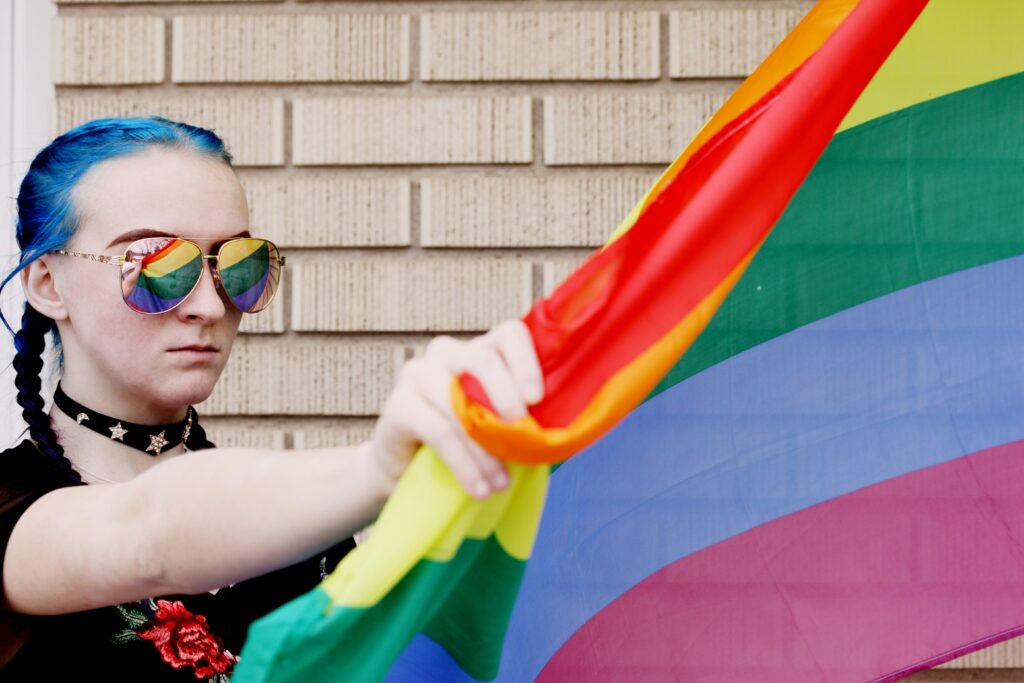
Teen anxiety is a serious issue that affects many young people today. It can be even more challenging for those who identify as part of the LGBTQA+ community. As parents, it is our responsibility to support and protect our teens as they navigate the world before them. This is especially when they are already vulnerable due to the often misjudged view of sexual orientation or gender identity. In this blog post, we will explore how parents can best support their LGBTQA+ children who may be struggling with anxiety and depression.
Understanding Your Teen's World
Delving into the world of your teen, especially one who identifies with the LGBTQA+ community, demands a concerted effort to comprehend their unique perspectives and experiences. This journey begins by creating a nurturing environment where your child feels safe to express their thoughts, worries, and victories. Engaging in meaningful conversations with your teen allows you to grasp the nuances of their daily life. This includes the joys and challenges specific to their identity. Acknowledge and validate their emotions, demonstrating empathy and genuine interest in their wellbeing. It's also beneficial to familiarize yourself with the social dynamics and potential pressures they face, whether in school, online, or in broader society.
This insight can guide you in offering more targeted and effective support. Engaging with the content they consume, whether it's books, movies, or social media, can provide valuable context. It can also open up opportunities for discussions about representation, acceptance, and resilience. Remember, understanding your teen's world isn't about making assumptions based on your experiences. It's about listening, learning, and adapting to their individual needs and realities.
The Importance of Open Communication

Fostering a dialogue where feelings and fears can freely flow between you and your LGBTQA+ teen is paramount. Encouragement for them to share their innermost thoughts without fear of judgment or dismissal lays the foundation for trust and mutual understanding. This act of sharing becomes a powerful tool for reducing the burdens of anxiety and promoting a healthier emotional landscape.
As a parent, your role is not to have all the answers. It is to listen with an open heart and mind, offering guidance when asked and always extending compassion.
Remember, conversations should be a two-way street. It is important to allow your teen to voice their concerns, as well as you sharing your feelings and thoughts. This level of exchange deepens the connection between you and your child. It provides them with the reassurance that they are not alone in their journey. To facilitate these discussions, consider setting aside regular, uninterrupted time to check in with your teen about their life and experiences.
These moments can range from casual chats during a drive to more structured sit-downs at home. They can emphasize the importance of their feelings and your commitment to supporting them. Through open communication, you cultivate an environment where your teen knows their voice is valued and their emotional well-being is a priority. This reinforces the strength of your bond and their sense of security in their identity.
Educating Yourself and Your Family
Navigating the complexities of the LGBTQA+ spectrum requires a proactive approach to education for parents and family members. Dedicating time to understand the diverse array of sexual orientations and gender identities enriches your perspective. It can enable you to offer nuanced support to your teen. This journey of learning extends beyond mere definitions. It involves grasping the historical, social, and emotional contexts that shape the experiences of LGBTQA+ individuals. Resources such as books, documentaries, and reputable online platforms can be invaluable tools in this educational pursuit. Additionally, engaging in workshops or seminars geared towards families of LGBTQA+ members can provide practical advice and foster empathy.
Sharing this newfound knowledge with other family members cultivates an environment of acceptance and allyship within the home. It’s about building a collective understanding that supports your teen’s journey, challenging any pre-existing biases or misconceptions. Such an inclusive family dynamic not only bolsters your teen’s confidence but also signals that they are in a safe space, free from judgment.
Moreover, this educational endeavor serves a dual purpose. It equips you to correct misinformation and advocate for your teen in broader social circles. By becoming informed allies, you and your family set a powerful example, contributing to a more understanding and supportive society for all LGBTQA+ individuals.
Finding Community Support
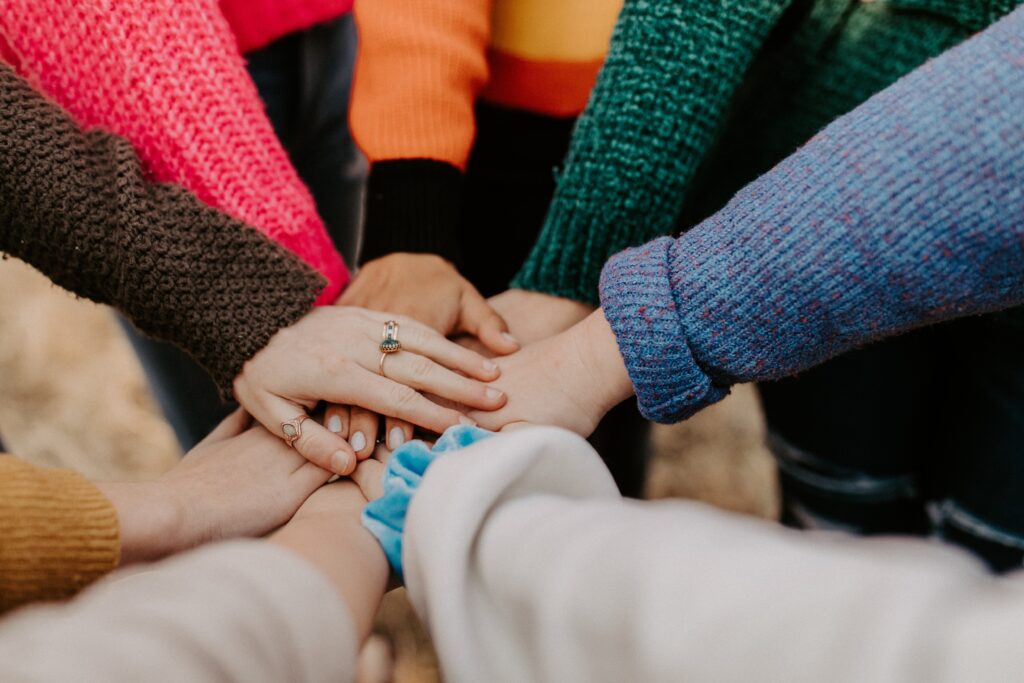
In the journey of navigating life as an LGBTQA+ teen, the significance of connecting with a supportive community cannot be overstressed. Encouraging your child to seek out and engage with groups that provide a safe and understanding environment is key. These can include local LGBTQA+ youth groups, online forums specifically geared toward LGBTQA+ teens, and inclusive extracurricular activities that celebrate diversity.
Such spaces offer not only camaraderie but also the opportunity for your teen to see themselves reflected in others’ experiences, reducing feelings of isolation.
Introducing your teen to LGBTQA+ role models and mentors can also have a profound impact. Many organizations offer mentorship programs where young people can connect with adults who have navigated similar paths. These relationships can provide guidance, reassurance, and a tangible sense of hope for the future.
Additionally, participation in community events, such as pride parades or LGBTQA+ advocacy and awareness activities, can further strengthen your teen’s network of support and belonging. These experiences allow them to actively engage with a wider community that shares a common goal of acceptance and equality. By facilitating these connections, you help your teen build a supportive network that embraces them for who they are. That can only reinforce the notion that they are not alone in their journey.
Advocating for Your Teen
To champion your LGBTQA+ teen's rights and well-being, taking an active role in advocacy is crucial. This involves understanding their rights and standing up for them in various contexts, such as educational settings or healthcare environments. Start by familiarizing yourself with the policies and protections in place at your teen's school. Advocate for the implementation of inclusive policies if they are lacking. Work closely with educators and administrators to foster an environment that respects and acknowledges your child's identity.
In healthcare settings, ensure that your teen has access to knowledgeable and affirming providers who understand the specific needs of LGBTQA+ youth. This may require you to seek out specialists or services that are explicitly supportive of the LGBTQA+ community. Additionally, engage with your community to promote awareness and acceptance, volunteering with or supporting organizations that fight for LGBTQA+ rights. By taking these steps, you actively contribute to creating a safer, more accepting world for your teen and others in the LGBTQA+ community. Your advocacy demonstrates to your child the power of standing up for one's beliefs. It also shows how important striving for a just and equitable society is.
Mental Health Resources and Professional Help
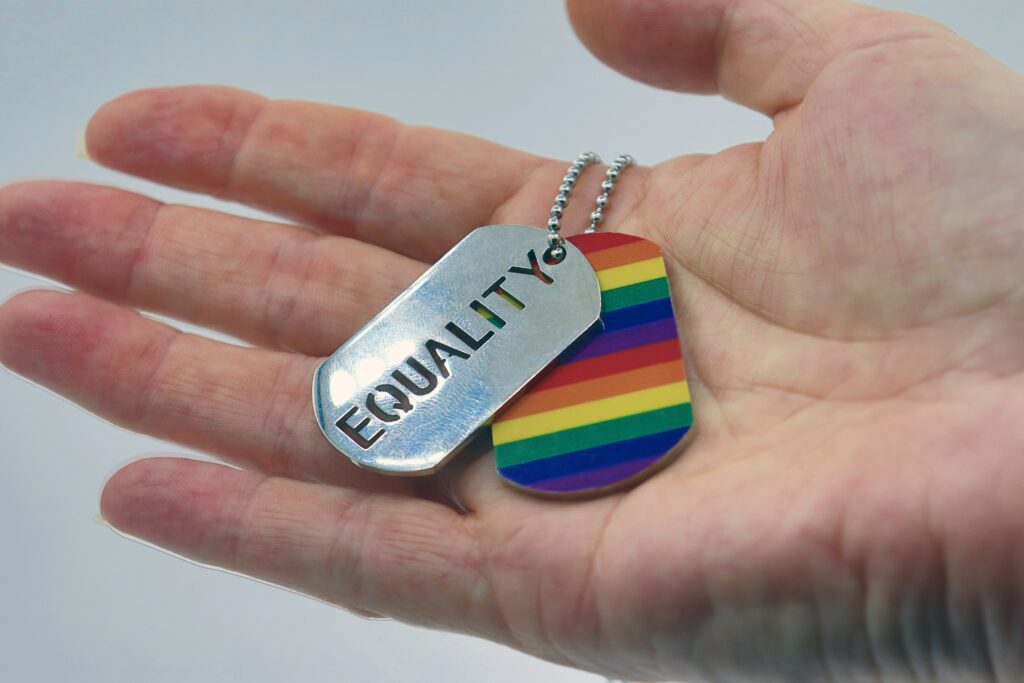
Identifying and utilizing mental health resources tailored to the unique needs of LGBTQA+ teens is critical in supporting their journey towards well-being. Engage with psychologists, counselors, or therapists who specialize in LGBTQA+ youth mental health. Ensure they offer a safe, affirming space for your teen to explore and address their feelings.
It’s essential to prioritize professionals who demonstrate a deep understanding of the challenges faced by LGBTQA+ individuals. This includes issues related to identity, acceptance, and bullying.
Look for practitioners who not only provide therapeutic support but also advocate for the mental health needs of LGBTQA+ youth within broader contexts. Resources such as online directories, recommendations from local LGBTQA+ organizations, or school counselors can be invaluable in finding the right support. Additionally, explore support groups where your teen can connect with peers facing similar experiences, promoting a sense of belonging and shared understanding. Engaging in these proactive steps ensures your teen has access to the comprehensive care necessary to navigate their mental health challenges confidently.
Celebrating Identity and Fostering Self-Love

Supporting your LGBTQA+ teen involves more than just understanding and advocating for them. It's about actively celebrating their unique identity and encouraging a profound sense of self-love. This aspect of support plays a pivotal role in fortifying their mental and emotional resilience amidst the challenges they may encounter. Begin by recognizing and honoring their personal milestones. This could be, coming out, choosing a new name, or expressing themselves in a way that feels true to their identity. These moments, big or small, deserve recognition and celebration. It reinforces the message that their identity is a source of joy and pride, not something to be hidden or ashamed of.
Encourage your teen to explore and connect with the rich tapestry of the LGBTQA+ community's history, culture, and achievements. Understanding the struggles and triumphs of those who have paved the way can instill a sense of pride and belonging. It can link their personal journey to a broader, collective narrative. This connection can be incredibly empowering, offering both perspective and inspiration.
Promote avenues for creative expression with your teen. Allow them to explore and articulate their feelings, experiences, and identity in ways that resonate with them. Whether through art, writing, music, or any other medium, creative activities provide a therapeutic outlet for self-exploration and expression It fosters a deeper connection with their inner self.
Lastly, embody the unconditional love and acceptance you wish for them to feel towards themselves. Your attitude and actions set a powerful example. By embracing your teen's identity wholeheartedly, you model the self-love and acceptance you hope they will cultivate within themselves. You will for sure, nurture a positive self-image and a resilient spirit.
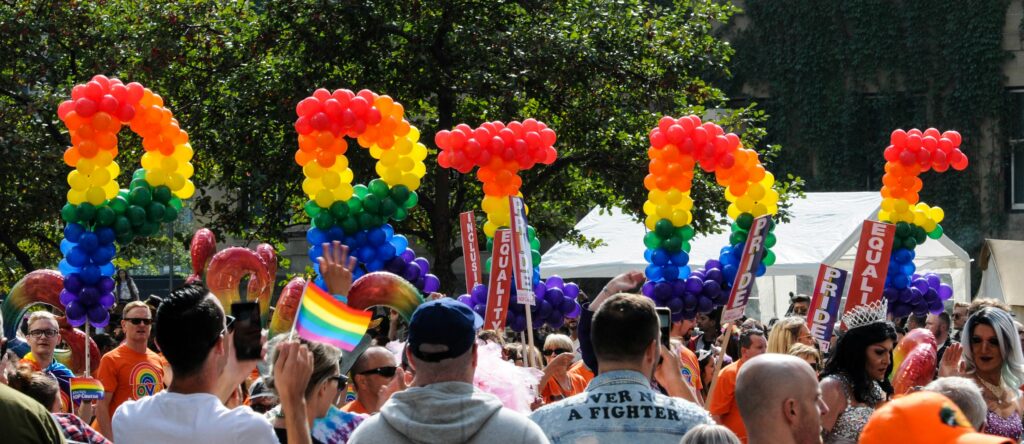
Pride month is a time of celebration, recognition, and unity for the LGBTQIA+ community and its allies. It is a time to honor the struggles and triumphs of those who have fought for equality. A time to continue the ongoing fight for acceptance and inclusion. As we delve into the significance of Pride month, let's explore what it means to be part of the LGBTQIA+ community, the role of allies, and how we can all come together to create a more connected and understanding world.
The Essence of Pride: More Than Just a Month
Pride month transcends the vibrant parades and rainbow flags that symbolize its celebration. At its core, it embodies a profound moment of collective reflection and acknowledgment for the LGBTQIA+ community. It's a period marked by a deep dive into the rich tapestry of LGBTQIA+ history, a history fraught with battles for rights, recognition, and the freedom to love and exist openly. It offers a moment to celebrate the victories and acknowledge the setbacks, understanding that the journey towards equality is ongoing and far from over.
Pride month is an opportunity to amplify the voices of the LGBTQIA+ community. It is to share stories of resilience, courage, and solidarity. It's a call to acknowledge the diversity within the community, recognizing that each individual's experience is unique, yet bound by a common struggle for acceptance and equality. This month serves as a reminder to engage with our identities fully and to claim spaces where we can express ourselves freely. It is when we can advocate for those still silenced by oppression and prejudice.
It's also a time for learning and growth, inviting individuals outside the LGBTQIA+ community to listen, learn, and participate in the movement towards a more inclusive society. Pride month challenges us to confront our biases and engage in meaningful conversations, and to extend our support to the ongoing fight against discrimination and inequality. It encourages us to look beyond the surface, to see the heart and soul of what Pride truly represents. It is a celebration of love, in all its forms, and a call to action for justice, today and every day.
Pride From the Perspective of an LGBTQIA+ Individual

For those of us within the LGBTQIA+ community, Pride holds a deeply personal significance. It is a time where our identities, often marginalized or misunderstood, are celebrated loudly and proudly. Pride serves as a poignant reminder of our resilience. It is a celebration of our ability to live openly and authentically in a world that hasn’t always welcomed us with open arms. It's about embracing every part of who we are, the struggles and the triumphs, and sharing that pride with the world.
For those of us within the LGBTQIA+ community, Pride holds a deeply personal significance. It is a time where our identities, often marginalized or misunderstood, are celebrated loudly and proudly. Pride serves as a poignant reminder of our resilience. It is a celebration of our ability to live openly and authentically in a world that hasn’t always welcomed us with open arms. It's about embracing every part of who we are, the struggles and the triumphs, and sharing that pride with the world.
For many, Pride is a testament to personal growth and self-acceptance. It's a journey of understanding and loving oneself, sometimes against formidable odds. It represents a collective defiance against attempts to erase or diminish our existences, and a celebration of the progress made, while acknowledging the work that remains.
Engaging in Pride activities, whether through parades, protests, or intimate gatherings, feels like joining a chorus of voices that resonate with a shared experience. It’s in these moments of unity and celebration that we find a powerful sense of belonging.
Yet, Pride is not only about the outward expressions of celebration and protest. It's equally about the quiet moments of reflection on one’s identity, the internal battles fought and won, and the personal declarations of self-worth and dignity. It’s an affirmation that our lives, our loves, and our stories matter and deserve recognition.
In essence, Pride from the perspective of an LGBTQIA+ individual is a rich tapestry of personal and collective narratives, woven together by the threads of courage, love, and unwavering hope for a future where everyone can live freely and authentically.
The Role of Allies During Pride Month
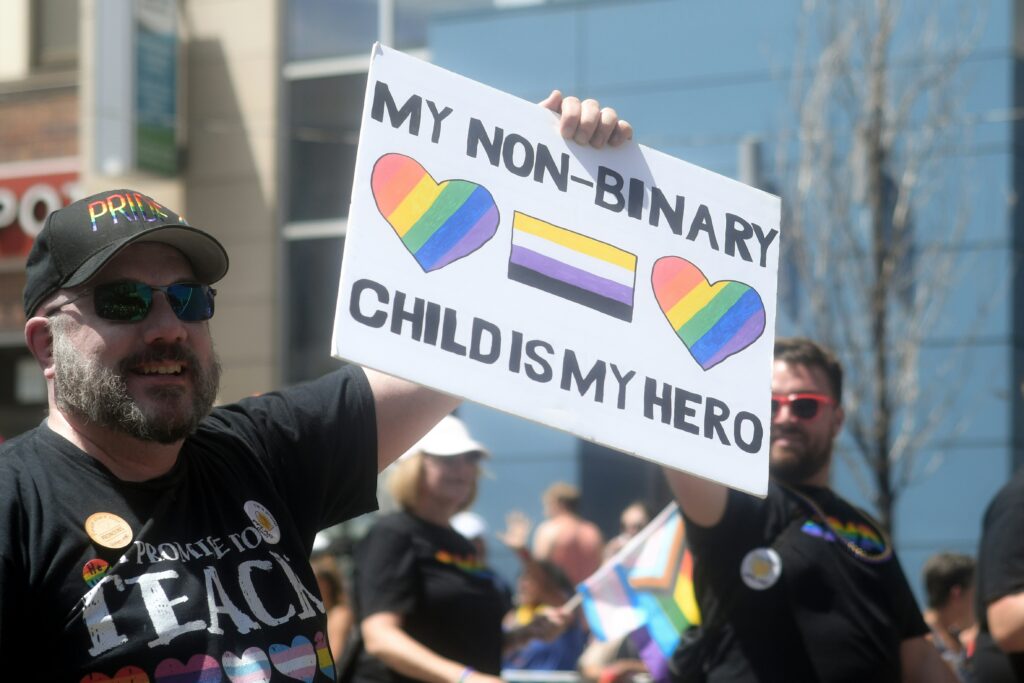
Allies to the LGBTQIA+ community possess a unique and invaluable position during Pride Month. They offer support, amplification, and advocacy that can significantly impact the atmosphere of acceptance and understanding. The presence and active participation of allies can underscore the universal message of Pride. That message is equality, love, and respect for all, irrespective of sexual orientation or gender identity. Allies can contribute by educating themselves about the history, challenges, and achievements of the LGBTQIA+ community, thereby fostering a deeper connection and empathy.
Allies can demonstrate their commitment to the cause of equality in many ways. Engaging in conversations, attending Pride events, and showing solidarity on social media and in daily interactions are some ways. This active involvement not only provides tangible support but also inspires others to reflect on their own attitudes and beliefs. This can potentially lead to a broader cultural shift towards inclusivity. Respectful curiosity and a willingness to listen are key attributes of effective allyship. Asking questions, seeking out resources to better understand the complexities of LGBTQIA+ experiences, and acknowledging one’s own privileges can pave the way for more meaningful support.
Moreover, allies have the power to influence their own circles. They can challenge homophobic and transphobic remarks or behaviors and advocate for LGBTQIA+ rights in personal, professional, and public spheres. Their role is not to overshadow or speak over the voices of LGBTQIA+ individuals but to stand with them. They can lend their support to amplify the messages of Pride and push back against inequality. Through these concerted efforts, allies help to build bridges, encourage dialogue, and contribute to the creation of a more accepting and compassionate society.
Navigating the Challenges: Mental Health and Inclusion
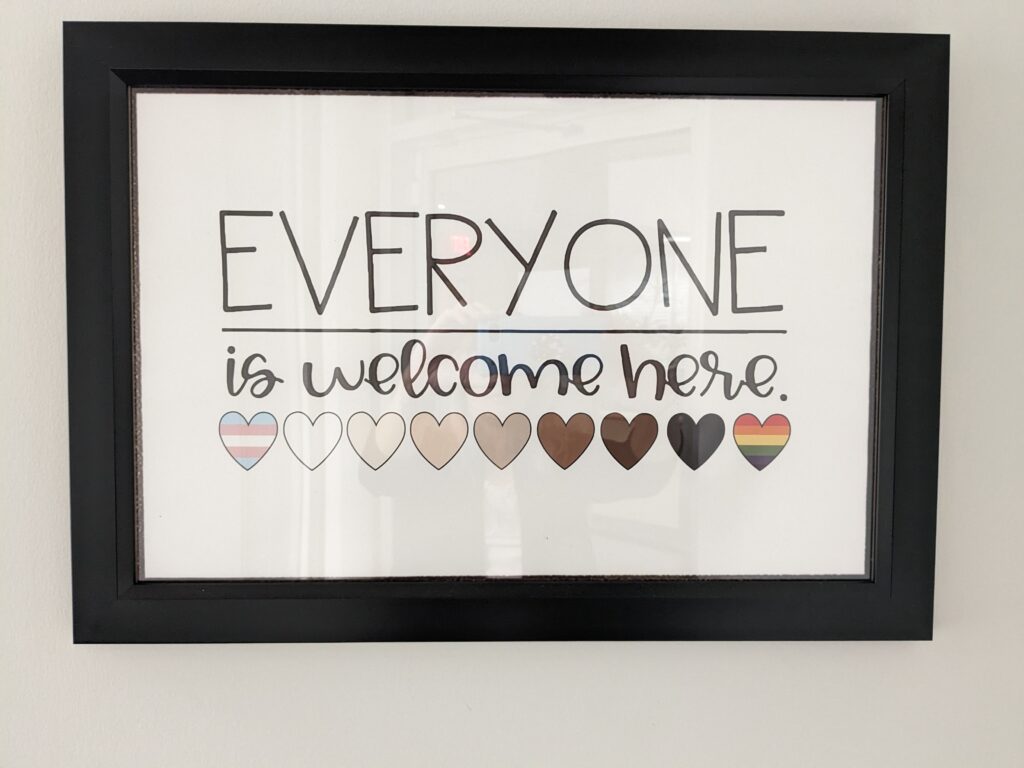
Navigating the complexities of mental health and inclusion presents a vital front in the journey towards a more accepting society for LGBTQIA+ individuals. The shadow of stigma and discrimination often casts a long and heavy burden on the mental well-being of community members. This might manifest in elevated rates of depression, anxiety, and feelings of isolation. Addressing these challenges necessitates a concerted effort from both the community and its allies to forge environments that are not just physically safe, but emotionally nurturing and inclusive.
Creating these spaces involves a multi-faceted approach. This includes advocacy for comprehensive mental health services that are sensitive to the unique needs of LGBTQIA+ individuals. It calls for an increase in representation across all sectors, ensuring that LGBTQIA+ voices are heard and validated in discussions about mental health. Additionally, fostering an atmosphere of open dialogue and education can help dismantle the harmful stereotypes and misconceptions that contribute to the societal stigma impacting mental health.
Engagement in these efforts is crucial. It signals to those grappling with mental health challenges that they are not alone. That their experiences are valid, and that there is a community ready to support them. By prioritizing mental health and inclusion, we can take significant strides towards alleviating the isolation and distress felt by many, paving the way for a future where every individual can thrive.
Fostering Connection and Understanding Across All Walks of Life
To bridge the divide between diverse communities, active engagement and open-hearted dialogue are pivotal. Encouraging empathy through shared experiences and stories allows us to see beyond our differences. It can uncover the common humanity that binds us. It’s through these personal connections that misconceptions can be dispelled and biases challenged. Participating in community events, volunteering for LGBTQIA+ causes, and being present in spaces that advocate for equal rights are practical steps anyone can take to deepen their understanding.
Furthermore, creating platforms for marginalized voices and ensuring these narratives are both heard and respected is crucial in fostering a culture of inclusivity. This effort requires a willingness to step out of one’s comfort zone and question the status quo. It is to actively listen with the intent to understand, not to respond. Through such actions, we weave a stronger social fabric. A fabric that is rich with diversity yet united in its quest for acceptance and equality. Engaging in this process not only enriches our own lives but also contributes to a broader societal transformation. This can pave the way for a future where everyone is celebrated for who they are.
Celebrating Pride While Staying True to Oneself
Celebrating Pride Month is an affirmation of our diverse identities and the vibrancy they bring to the collective human experience. It’s a period where the emphasis is on the valor to be oneself amidst a world still grappling with acceptance and understanding. Embracing our uniqueness becomes a powerful declaration of self-love and respect during this time. It is an invitation to honor our journeys, recognizing the courage it takes to live authentically in a society that often challenges our existence.
Engaging in Pride, therefore, means more than just participating in festivities. It's about internal reflection on the significance of our identities and the pride we carry in them. It's a call to acknowledge our worth, to celebrate our resilience, and to stand in solidarity with others who share our struggles and dreams. As we navigate through Pride Month, let's commit to fostering environments where everyone feels seen, heard, and valued. Let this be a time where we champion our rights, advocate for those still fighting for their voice. Remember that being true to ourselves is the ultimate act of resistance and celebration. Together, through understanding and embracing our unique stories, we contribute to a richer, more inclusive world.
Art therapy is a newer form of therapy. It is an integrative mental health practice that is designed to improve the lives of individuals, families, and communities through the process of art-making, creative process, applied psychological theory, and human experience within a therapeutic relationship.
Art therapy should be done by a trained professional of art therapy. This will improve the effectiveness as art therapists are trained to create art therapy exercises that are designed to not only support you but also to help move deeper into your therapeutic goal. Art therapists are trained to use their knowledge to support your personal and therapeutic treatment goals throughout treatment. Art therapy has been used to improve cognitive and sensorimotor functions, help support a better relationship with self-esteem and self-awareness, produce emotional resilience, promote insight, enhance social skills, reduce and resolve conflicts and distress.
Art therapy is a wonderful tool therapists use to help patients interpret, express, and resolve their emotions and thoughts. This is a newer type of therapy and was first established in the 1940s however the practice did not become more widespread till the 1970s. Like other expressive arts therapy, such as dance therapy or music therapy, it draws on creativity.
Inaccurate Use of Term 'Art Therapy'
Often people mistake “Art therapy” for things that are not necessarily due to a lack of knowledge about the profession. However these situations provide an opportunity to offer accurate information and educate the public. This modality must be done by a trained art therapist or it is technically not art therapy. Some products that are mistaken for art therapy are adult coloring books and paint by numbers. Art therapists are not art teachers, their goal is not to make you a better artist but to help you improve your mental state through the use of art.
How Art Therapy Works
Many people ask "What is art therapy and how does it work?" It is all about expression. The process of creating is the most important thing, not the end product which is why anyone can do it. Often many people shy away due to a fear of not being an artist but this type of therapy is for anyone. It is designed to use the expressive arts as a way for people to understand and respond to their emotions and thoughts with a valuable new perspective, not only that artistic expression is good for mental health as it is often related to relaxation.
During a session, an art therapist works with clients to understand what is causing them distress. Then the therapist guides the client to create art with an art directive that addresses the cause of their issue or explores it further. During a session, art therapists may:
- Describe the goal of art therapy
- Explain that clients don't have to think of themselves as creative or artistic to benefit
- Help the client choose and use a medium, such as drawing, sculpture, collage, or painting
- Guide the client through expressing themselves through art, usually by asking questions
- Discuss the results, both the work of art and what the client felt
- Plan for another session or for the client to work on their own
Through different mediums and art techniques art therapy engages the mind, body, and spirit in ways that are not dependent on verbal articulation alone. Due to the way it engages the body and mind it causes various symbols to be created through the art process, this process also invites modes of receptive and expressive communication, which can benefit those who have limitations of language.
Who are Art Therapists
Art therapists are clinicians who are trained both in traditional clinical therapy and art therapy. Art therapists work with people of all ages and various populations. All art therapists are required to follow an ethical code. All art therapists are also required to have a master’s level education, as well as engage in supervision hours under a trained professional in order to obtain their license. This prepares them for various populations and gives them the ability to perfect their work.
Where Art Therapists Work
Art therapists work with individuals, couples, families, and groups in diverse settings. Some examples include:
- Hospitals
- Schools
- Veteran’s clinics
- Private practice
- Psychiatric and rehabilitation facilities
- Community clinics
- Crisis centers
- Forensic institutions
- Senior communities
Does Art Therapy Work?
There is growing evidence that art therapy helps conditions such as anxiety and depression, trauma, low self-esteem, PTSD, Bipolar and similar disorders. It has also been used with those facing terminal illnesses such as cancer and those hospitalized experiencing pain, as well as it has been used with people working to develop effective coping skills, including prison inmates
Many clients are reluctant to explore art therapy because they think that they have to have artistic talent for it to work or see it as "arts and crafts" rather than see it as an effective tool. This mindset can be very limiting and can hinder the effectiveness for these clients. It is important to go in with an open mind.
Is Art Therapy a Good Fit?
There's no way to tell for certain whether art therapy is a good fit for any given person. Therapy is not one-size-fits-all, and a client and therapist may need to use multiple different approaches and techniques in order to find what works best for you. However, if a patient is drawn to art or has had trouble expressing with traditional therapy, art therapy may be a wonderful fit for you.
When choosing a therapist it is good to consider the following. As a potential client, ask about:
- What is the therapist's experience with your particular mental health concern
- Which kinds of art the therapist uses
- How the therapist works with clients with your level of artistic experience
- What outcomes to expect
Often you should be able to tell in 1-3 sessions if this works for you.
Think Art Therapy Would Benefit You?
If you feel like art may be a good avenue for you to work through your mental health concerns please call our office and ask for Jillian Martino. Jill is our art therapist on staff and would be more than happy to help you work through your concerns through art. Jill specializes in LGBT issues, trauma, children and couples. Contact our office today to set up a free 15 minute consultation.
Do you have a child who is questioning their own sexual or gender identity? Or are you just curious to learn more about what LGBTQ+ means and how it may impact your child? Whatever the case may be, you ended up here for a reason! Here I will do my best to provide information, advice, support, and maybe you will even get something out of this post that will help you in your life and relationships. We will explore the risks, the coming out process, stereotypes and stigmas regarding the LGBTQ+, as well as some of the things you may experience as parents.

Risks for Your LGBTQ+ Child
It unfortunately goes without saying that children or teens that start expressing their own sexuality or gender, which may be out of the norm, will get weird looks, rude comments, or even just a slight double-take from someone walking by. Therefore, it goes without saying that yes your child may experience some discrimination or bullying from their peers at school or just from random strangers at the supermarket. Here are some quick facts of some of the risks:
- Suicide is the leading cause of death amongst LGBTQ+ youth in the US
- With suicide being the third leading cause of death amongst teens in the US
- LGBT youth who are rejected by family are 8 times more likely to commit suicide
- Compared to 19% of non-LGBTQ+ youth reporting being bullied at school, 34% of LGBT youth report bullying in school and 28% reported cyberbullying.
- Some LGBTQ+ youth may also stay home from school due to feeling unsafe
However, times are changing and the opinions of others are also changing. As a parent, you want to protect your child from all the different dangers that your child may run into; although that is not always going to be possible!
The Dreadful Process of Coming Out
UGHHH let me tell you, this was one of the hardest things I’ve ever done for myself. And yes, that is correct. I did it for myself. I didn’t do it for the acceptance of others, for others to view me differently, or even just for people to know that one thing about me. I did it for myself because it is something that can be so freeing and such a relief for that kid who’s stayed in the “closet” for so long. As parents, here is my message to you: Your child is absolutely frightened by how you will respond, how you will react, and worst of all if you would still love them for who they really are. There is so much going through their heads that they may not even understand, so for someone with authority like yours, for someone who has been with them since day 0, they are only hoping for support.
It may be helpful to support your child with their journey to finding out their own identity. As parents, you can be the ones providing the information for your child with the security of it being accurate. There are a few stages to coming out, though primarily the stages of self-discovery, coming out, as well as positive self-identity do have a major impact on the everlasting impact on your child. You can read more about the stages of coming out here: The Stages of Coming Out.
LGBTQ+ Stereotypes & Myths
- Sexual orientation is a choice
- The reality of the situation is that there are biological and genetic factors that contribute to someone’s sexual orientation. Epigenetics, genetics that are changed over the course of generations, also play a factor.
- Sexual orientations can be “cured”
- The simple answer is no. Conversion therapy is not practiced in the state of New York, as well as 19 other states. The reason why it is illegal in these states is because it has been found to be harmful and ineffective.
- My child might turn other children gay
- Again, the simple answer is no. It is true that your child's peers do have a heavy influence on each other, though sexual orientation is not something that is learned from peers.
- Homosexuality is abnormal
- Homosexuality, or any other sexual orientation, is not an illness. Yes, the DSM had classified homosexuality as a mental illness, though in 1973 homosexuality was deemed to not be an illness that can be treated nor can it be changed.
What Does it Mean for Your Parents?
As parents who just discovered or found out their child identifies as part of LGBT+, there may be a few different emotions and stages you go through yourself. This is just like any other transition in the family, it is something that is obviously going to cause some shock or take back. Below are some of the stages you may experience as parents, but remember you may not even experience any of these!
- Denial
- The initial denial you may have of what your child comes to you with is definitely normal. Part of this stage is believing that your child is just going through a “phase” and that this will be over in a couple of weeks. That is oftentimes not the case! Therefore, if there are some feelings of denial, gather some reassurance from your child because communication is what will help both of you.
- Guilt
- Some feelings of blame and guilt can definitely arise during this process as well. You may blame yourselves for believing you did something to cause this, or you may even start to blame your child for forcing their values onto you. The same can be said for blaming your child's parents for influencing your child. Just remember, it is not anyone's fault and there is no blame to be placed.
- Fear
- You may fear that your friends or those that you keep close to you are going to view your family differently because of how your child now identifies. You may be fearful of being ostracized by your loved ones; although, can’t the same be said for your child when they garnered the bravery to come out?
- Acceptance
- Accepting your child for who they are and loving them unconditionally, as you always have. Your child is still a child. They are still in need of love, care, support, encouragement, all of the above. Weren’t there some things that you did during your childhood that you were worried your parents would hate you for?
There is so much more that can be said within this guide. Always try to be the supportive, kind, gentle parent that you intended to be when your child was born. This Fall, Long Island EMDR will be hosting a support group for parents with LGBT+ youth. Throughout this group, you will be able to garner support from other parents, gain knowledge on LGBT+, as well as learn how to best support your child on their journey.
What Does it Mean to be an LGBTQ Affirming Therapist?
As LGBTQ Affirming Therapist in Suffolk County, NY we take an approach to therapy that embraces a positive view of Lesbian, Gay, Bisexual, Transgender, and Queer (LGBTQ) identities and relationships. We also are intently aware and proactive in addressing the negative influences that homophobia, transphobia, and heterosexism have on the lives of our LGBTQ clients.
How We Ensure That Our Providers are Truly Affirming Therapists
- Self-reflection: All of our clinicians engage in supervision in which we explore and address biases, beliefs and attitudes from their own upbringing. It is important for us as a practice that all of our therapists have either been in therapy and/or are actively engaged in therapy so they are aware of their own biases (not just of the LGBTQ community but also, race, socioeconomic status, ethnicity, etc.).
- Involvement in the community: Our practice engages in many LGBTQIA+ events and networking with other agencies and business owners who work with and/or are part of these communities. Several members of our team are members of the community themselves and our cis gendered clinicians, when needed, consult with them in group supervision to get their prospective on client’s concerns.
- LGBT Affirming paperwork: Our intake documents account for those that do not fit the herternormative boxes. For those planning to bill insurance it must be under your legal name but we do have a “Preferred” name box as well to ensure all staff address you by your chosen name and pronouns.
- Education- We encourage and promote our clinicians attending training related to LGBTQIA community concerns.
What You Can Expect From Our LGBTQ Affirming Therapists LGBTQ in Suffolk County, NY
All of our therapists are extremely interpersonal. They want to know you: Your story. Where you came from. What happened to you. We pride ourselves in being a practice of “above and beyonders” who really want to know our clients and understand them. Part of being an LGBTQ affirming therapist in Suffolk County, NY is being a therapist that does not make assumptions about our clients but being open to hearing their stories and experiences. Every coming out story is different. Everyone’s level of comfort and openness about their sexuality and gender expression is different. We won’t put you in a box because you are part of the community. Your experience as a member in the community is still uniquely your own. We wholeheartedly believe and understand that your sexual identity and gender expression is no where near the only thing that defines your you-ness.
Being affirmative means we strive to treat all of our LGBTQ clients and their families with the respect and dignity they deserve. Our role is to support you, to uplift you, to empower you to make the changes you would like to see in your daily lives and heal from past hurts. We want you to know you are absolutely fine just the way you are.
Ready to See an LGBTQ Affirming Therapists LGBTQ in Suffolk County, NY?
Contact us now to schedule an appointment to meet with one of our amazing affirming therapists. We truly would love to help you through whatever is bringing you to counseling. Our providers have a range of expertise including: couples, trauma, grief & loss, anxiety, OCD, depression and BPD. There are also many modalities used within the practice including: EMDR, TF-CBT, mindfulness, CBT, solutions-focused, and strengths-based counseling. Our administrative assistant will match you with a therapist who is not only affirming but can also address the underlying concern that has brought you to seek treatment.
Sending Love & Light,
For starters, someone’s own gender identity is a process that may come naturally to some, though for others it may not be as easy. Whether it be exploring your own gender identity, sexual orientation, or even just working through your own curiosities, everyone should have a support system to help them along the way. Here we will discuss LGBTQIA+, the different sexual orientations, gender identities, as well as how seeking therapy can support you in this process.

Firstly, here are gender definitions to become familiar with:
● Gender Expression - the outwards expression of gender, typically expressed/observed through people’s names, pronouns, clothing, behaviors, body characteristics, and more.
● Gender Identity - invisible to other people, one’s internal definition of their own gender. Some people may feel comfortable with the gender that they are given at birth, though others may not.
● Sex - oftentimes confused with one’s gender, but someone’s sex identity is more-so biological than anything else. Someone’s sex is the combination of body characteristics (hormones, chromosomes, reproductive organs, etc.), thus being more than just two sexes.
There is a wide range of gender identities that people fall under and identify with. It is crucial to validate the feelings of someone who may be uncomfortable with their gender identity, as it is a significant life event that causes stress. Whether you already know your own gender identity, or if you are currently exploring that area of your life, seeking support can be helpful!
Secondly, here are some LGBTQIA+ sexual orientations:
● Asexual - someone who experiences minimal to no sexual attraction, though may still experience romantic attraction.
● Bisexual - someone who experiences an attraction to others of the same gender as well as people of another gender.
● Gay - someone, typically a male, who experiences attraction to someone else of the same gender.
● Lesbian - a woman who is attracted to another woman, ‘lesbian’ and ‘gay’ are sometimes interchangeable.
● Pansexual - someone who experiences an attraction towards another person regardless of their gender
● Queer - an umbrella term for anyone who does not identify as heterosexual or cisgendered.
Even though these are just a few definitions, there are many more sexual orientations that people feel attached to. Some people may question why there is a need for so many orientations or why there is a necessity to bring about awareness to this subject. However, it is so crucial to spread the word and to educate on these matters to increase the inclusivity of this community. Many people find plenty of comfort in connecting with one of the above, or many other, sexual orientations. Something as simple as “putting a label” to what one may be feeling can offer a sense of freedom as well as offer someone answers they didn’t have before.
Walking on the path of self-discovery at any stage of life can become too much for some to handle at times. Seeking mental health treatment is a great way to support yourself on this journey. Historically, the LGBTQIA+ community has faced discrimination as well as prejudice which is why our mission here at Long Island EMDR is to be a guide for those who may need it. We believe that therapy should be a place of comfort and safety, therefore we will do our best to ensure that we offer the best support that we can. There’s no reason to change who you are, only a reason to find out who you truly are on the inside!
As an LGBTQIA+ affirming practice Long Island EMDR is so proud to be a sponsor for Bay Ridge's first "Pride" event! Being involved and active in the gay community is so important to our mission of increasing visibility of this community and understanding the challenges and obstacles its members face on a daily basis. Please join us Sunday June 5th, 2022 from 12-5pm in Owl’s Head Park for a picnic accompanied with music, games, a queer pet march & much more.
For more information please check out the following sites:
LGBT+ affirming therapy/counseling in Smithtown, NY and Bohemia, NY
LGBT+ affirming therapy/counseling online across New York State
Long Island EMDR offers counseling/therapy to the LGBT+ population.
A counselor or therapist that treats LGBT+ people needs to be more than just “gay friendly”.
Being “LGBT+ informed” is ever changing! Our therapists engage in continuing training/education to best meet your needs. LGBT+ affirming therapy is based on the idea that being a part of the LGBT+ community is not in itself pathological or wrong. What is wrong, is the discrimination that LGBT+ people face, just by choosing to be who they are. This discrimination can happen in very bold or very subtle ways and it can happen in many different aspects of society. The impact that this discrimination has on LGBT+ people can lead to the development of symptomatic conditions.
Trauma-Informed LGBT+ Therapy
LGBT+ individuals experience abuse and neglect as children and adolescents at higher rates than the general public. As a result, the prevalence of sexual assault is higher among the LGBT+ population. Growing up LGBT+ many of our clients experience trauma in: coming out, deciding not to come out and just being your true and authentic self. Therefore, our practice is proud to be a trauma-informed practice with multiple EMDR and TF-CBT trained clinicians.
Long Island EMDR is proud to offer a safe space and open environment to talk about who you are and who you may want to be. SFT is also proud to offer affirming therapy/counseling to individuals, couples, families and groups in the LGBT+ community. Contact us today!